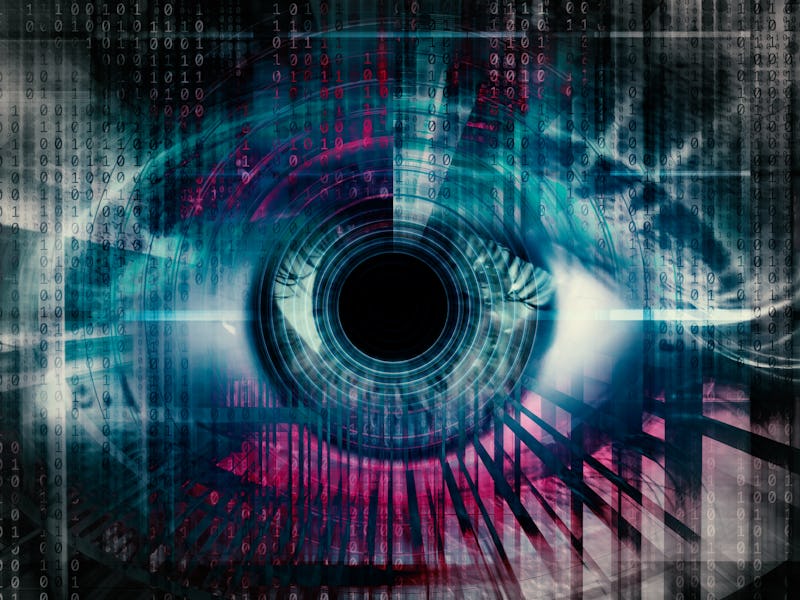This high-tech contact lens could diagnose cancer — and maybe treat it, too
Let’s put our tears to good use.

A cancer diagnosis can be extremely challenging. To make matters worse, the diagnostic process itself is often highly invasive and, at times, downright painful. Biopsies, for example, can involve deep incisions and stitches. But recent research aims to develop techniques that make that process easier, quicker, and more comfortable.
In a study published this month in the journal Advanced Functional Materials, researchers used a commonly-used product — a contact lens — and tweaked it to detect cancer.
The proof-of-concept study has so far only been tested in cells in a lab, but the researchers behind it are optimistic that it could one day transform the way doctors diagnose cancer by offering a speedy, non-invasive option that is sorely needed.
“This is pretty exciting compared to the other current techniques in this field,” says study author Yangzhi Zhu, a biomedical engineer at the Terasaki Institute for Biomedical Innovation, a non-profit research organization in California.
What’s new — The device, created by Zhu and colleagues at the Terasaki Institute, aims to detect signs of cancer by targeting cellular byproducts in tears called exosomes that are thought to indicate tumor growth somewhere in the body.
The contacts contain an antibody that is designed to spot and latch onto another antibody found on these exosomes. When the two antibodies combine, they turn red, indicating the presence of tumor cells. While this can be observed by the naked eye, it can also be further analyzed with a spectroscope to confirm the results.
Doctors use costly and sometimes uncomfortable methods, such as the CT scanner pictured here, to diagnose cancer. But this contact lens concept could drastically improve the patient experience.
How they did it — The team behind the high-tech lens had already done work developing contact lenses that can work as biosensors.
To optimize one to sniff out cancer, the scientists used lasers to cut and engrave microchambers that include a cavity to house the cancer-seeking antibodies. The microchambers have a dip to direct tears into the sensor area. On the surface of this section, polymers help the antibodies attract the desired ones in tears.
Why it matters — This quick, purportedly cost-effective procedure works a lot differently than, say, a standard blood test, biopsy, or CT scan. For those, patients may have to wait several days, or even over a week, to learn their results. They could even be left with scars from certain tests or procedures. Meanwhile, this method offers results within 30 minutes in a (theoretically) painless process.
Here’s the background — Exosomes form in most cells and make their way into several types of bodily fluids, including saliva, urine, and tears after cells dump them out. That’s why exosomes were once considered the “trash bags” of the cell, explains Bruno Costa-Silva, the principal investigator at the Champalimaud Foundation in Portugal, where he researches how non-tumor cells contribute to cancer growth. He was not involved in the current study.
It’s not a surprise that exosomes weren’t taken too seriously by scientists — that is, until the late 1990s, Costa-Silva says. Studies have since revealed that exosomes carry important molecules between cells, and can even travel from, say, the tip of your toe to your brain.
This finding had important implications for cancer research, since exosomes may carry molecules from tumor cells and spread them throughout the body. The circulating structures could then support tumor formation elsewhere.
Exosomes, like the one rendered here, can make their way into tears and possibly indicate cancer growth anywhere in the body.
“It’s very interesting because it’s a completely new angle, so there’s a lot of new biology [research] coming as a consequence of that,” he explains.
Given what we suspect about exosomes, Costa-Silva sees great potential in the Teraski Institute’s contact lens concept. But, he notes, the science isn’t quite settled.
Most studies on cancer diagnosis via exosomes analyze these structures in the blood, so it’s unclear whether exosomes from different cancer types can reach tears. Previously, it’s been hard to study exosomes in tears given the small amount of fluid.
“Now that they have this platform, which is amazing, it’s time to understand how much of what we know [from blood] … can represent the presence or absence of a specific tumor type” in tear-derived exosomes, he says.
Further, taking a closer look at exosomes to confirm the contact lens results takes a lot of work (and money). The equipment alone costs over $1 million, according to Costa-Silva, and it can take around a week to properly study exosomes in the lab with advanced technology like mass spectrometry. For now, this simple test could sacrifice a bit of specificity in the results, but further work could ensure it’s highly accurate in the first place.
Eventually, high-tech contact lenses could diagnose a range of diseases and even dispense drugs to treat them.
What’s next — Zhu and his colleagues are currently planning a study that will test the device on rabbits, which have similar peepers to human ones and are commonly used in ophthalmological research. The hope is that they can confirm the contact lens’s safety and eventually use it on humans within the next few years.
If it all works out, the contact lens won’t be limited to cancer testing. It could also be used to diagnose other conditions, such as certain autoimmune diseases, and even to deliver drugs.
“The microchambers can not only support a [disease] sensor, but can also be a vehicle to drugs and vaccines,” Zhu says. “This can also be used as a therapeutic device.”
So if going to the doctor makes you shed a few tears, at least they may be eventually used for good.
This article was originally published on